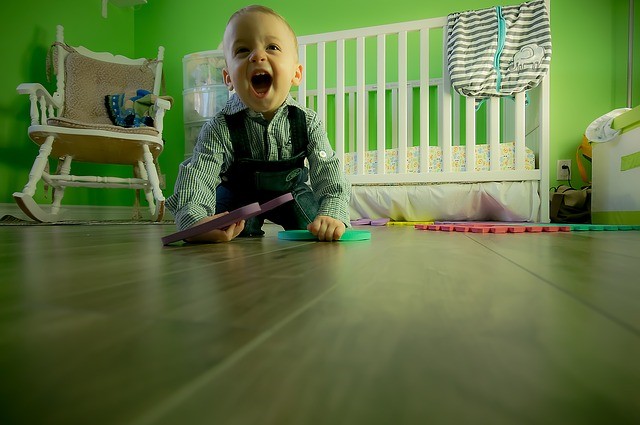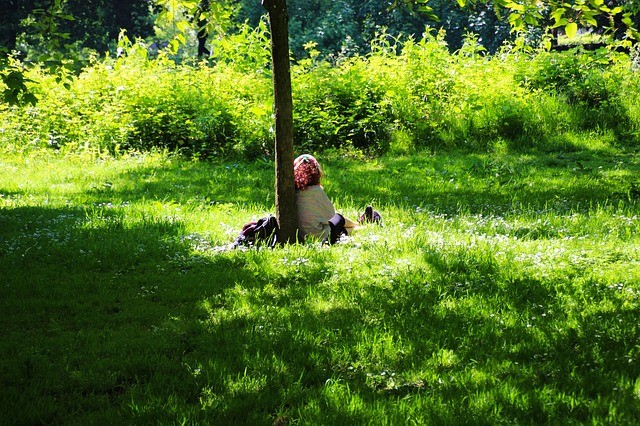
Lately, I’ve been spending a lot of time with my nephew Max. He’s two. Max is an energetic, playful child who, like all two-year-olds, has very little self-awareness. Most notably, he seems to have no awareness of when he is tired.
Luckily, his parents can tell. When Max starts to get tired, he becomes increasingly prone to frustration, crying, and general crankiness. In response, my brother and his wife impose naptime and bedtime. The important thing to note here is that Max would almost never choose to take a nap or go to bed, despite needing it.
“A toddler in motion tends to stay in motion unless acted upon by an outside force.” –Isaac Newton’s mother

Toddlers have no idea when they need to rest. They just want to keep playing, keep exploring, and keep interacting with people. They don’t volunteer to go to bed or take a nap. In fact, when naptime or bedtime is suggested, they protest. But sleep they must, so parents help them unwind and put them to bed.
As we grow up, we develop a better sense of when we’re tired and cranky, when we need to rest, and when it’s time for bed. But here’s the kicker:
We’re not much better at this than toddlers.
Busy adults need more rest but rarely choose it. We become cranky, but don’t recognize that it’s because we’re tired. We find ourselves getting frustrated over little setbacks, but fail to notice that it’s because we’ve been working nonstop for hours without a break. The biggest difference between adults and toddlers is that we don’t have anyone imposing naptime and bedtime upon us, so we usually don’t rest when we need to, and we usually go to bed too late.
If you’re feeling like stress is getting the better of you, you’re probably not resting enough. Tal Ben-Shahar, who taught positive psychology at Harvard, likes to think of stress as mental exercise. Just like physical exercise, some is good, but nonstop exercise leads to injury.1 You have to make time for rest. Chronic stress without adequate recovery leads to burnout.
As an athlete, I was prone to over-exercising without enough rest. Injuries started to pile up, and a painful lesson was learned: “Quit before you have to;” or, during the winter, “Live to ski another day.” This parallels a related piece of wisdom from Ben-Shahar who advises that you “Rest before you get tired.”1
I’m still trying to integrate this idea into my work-life, but, busy as I am, it’s hard to remember. I’m actively working to cultivate greater self-awareness, but that’s challenging, long-term work. In the meantime, I’m taking note of how my Max’s parents structure his days and borrowing ideas strategically.
Naptime
Most parents try to keep their young children on a regular schedule. Naptime is at approximately the same hour each afternoon, whether he thinks he needs it or not. The regularity of naptime helps make it a routine that the child’s body and mind come to expect. This (slightly) reduces the toddler’s resistance. And, again, there is a lesson here for us grownups.
If you schedule a regular afternoon break, you’ll be much more likely to take it. Such a break need not be a nap, though that would be nice. You could go for a walk, listen to some relaxing music, stretch, sit in the park and soak up some sunshine, or meditate. Just please don’t mistake stimulating non-work activities like television, social media, reading the news, and texting for a break. Those things are not restful. Take a real break.

By making a recurring appointment with yourself to take a break, you don’t have to rely on self-awareness to know when you need one. Odds are, at some point during the second half of your workday, you’ll need to rest. While you’re working, you may still fail to recognize your need for a break, but this regular appointment will pop up and remind you.
And, like a toddler, you will probably protest, thinking that you don’t need a break or that you simply don’t have time. But remember: Sometimes the best thing you can do for your productivity is to stop working, recover, and then start again. The same goes for your creativity because breaks allow our brains to slip into “diffuse mode,” in which we’re more likely to have innovative insights.2
Bedtime
As with naptime, bedtime is at roughly the same hour each night and for all the same reasons. But bedtime comes with special rituals which serve as a mandatory unwinding period. For Max, the unwinding is often a bath or a book, and it includes the trigger of putting on his PJ’s.
For me, unwinding before bed is a routine of putting on relaxing music, setting my phone to airplane mode, dimming the lights, and stretching. I use f.lux to dim the sleep-preventing blue light emanating from my computer screen, and it dims at a set time each day, which serves as a reminder that it’s time for bed.
You can set your own regular bedtime and strive to be as consistent with that as possible. You can use any number of reminder-methods to help you stay on schedule, which is much more effective than relying on memory. You can develop your own bedtime routine, doing whatever it is that relaxes you and helps you feel like it’s time to sleep.
The only things I would strongly encourage you to adopt from my own routine are dimming the lights and getting away from electronic screens. Bright lights, especially those from computer monitors, flat-screen TVs, phones, and tablets, inhibit the production of melatonin, which is the hormone that makes you sleepy and helps you enter deep sleep more quickly.3
Timeouts

If it’s not naptime or bedtime, and Max is becoming unruly, his parents will impose a timeout. For older children, a timeout is ostensibly an opportunity to reflect on your poor behavior, but I doubt toddlers are thinking deeply about their choices while in timeout. Rather, they’re being forced to stop, calm down, and do a mental reset.
If you find yourself becoming angry or being rude to someone, you probably need an adult timeout. When this happens to me – and when I’m self-aware enough to notice it – I take a microbreak. But the best way to prevent the need for timeouts is to rest before you get tired. How do you ensure that you do that? By scheduling regular rest-times, getting adequate, high-quality sleep, and capitalizing on OTMs.
Be Your Own Parent
When a toddler is tired, the signs are obvious, and the course of action is clear: It’s time to rest. When we experience exhaustion, the symptoms can be more subtle, but the need for rest is no less real. We can make rest a priority, schedule it, and turn it into a daily rhythm. We’re much too old to have our parents do this for us, so we’ll have to do it for ourselves.
1 Ben-Shahar, Tal. Psychology 1504: Positive Psychology. Harvard Open Course, 2009.
2 Oakley, Barbara. A Mind for Numbers: How to Excel at Math and Science (Even if you Flunked Algebra). Penguin, 2014.
3 Stevenson, Shawn. Sleep Smarter: 21 Essential Strategies to Sleep Your Way to A Better Body, Better Health, and Bigger Success. Rodale Books, 2016.
